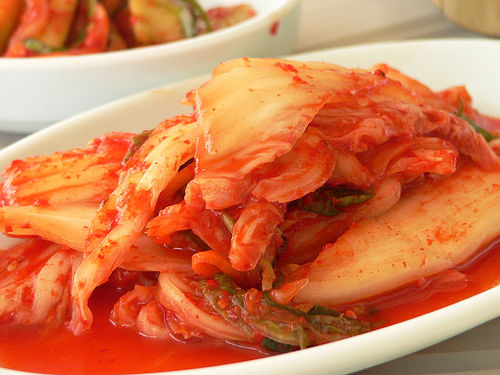Years ago I made yogurt using a recipe from Saul Sternberg. I still use the same ingredients — the basic point is to add about 1/2 cup powdered milk per quart of regular milk at the start — but I implement the temperature changes differently. Since I became interested in fermented foods, I’ve made yogurt a dozen times. Here’s what I’ve learned.
1. Makes a great condiment. I blogged about this. Store-bought yogurt, even the plain stuff, is too runny — not thick enough — nor sour enough to make this clear. The addition of powdered milk makes the yogurt thick enough to easily eat with anything, including meat. It improves the flavor of just about anything, especially if the yogurt is really sour. This might be the most important lesson since it means you can eat it at every meal and it makes cooking easier. I use spices much less now. The yogurt supplies complexity.
2. You can incubate it for days. I want it as strong as possible — not only because more sour (food writers euphemistically say tart) is better but also because the longer it ferments the more bacteria there will be. After a while it stops getting more sour and I stop. I routinely let it incubate one or two days, much longer than any recipe I’ve seen.
3. Preheating helps. Most recipes say you should heat the milk before you add the cultures. Some say this kills “bad” bacteria, which could compete with the bacteria you add. According to Harold McGee, the preheating denatures the milk proteins, which helps them trap liquid (whey). I did a little experiment in which I didn’t preheat some of the batches. Without preheating, the yogurt was much less solid. Supporting McGee.
4. Strauss yogurt better than Pavel yogurt. (Two popular Bay Area brands.) When I make a new batch I start it with store-bought yogurt; that works better than using what I have left. Side-by-side tasting showed that Strauss yogurt is more sour than Pavel yogurt. I made yogurt using each as the starter; the Strauss-started yogurt was clearly more sour than the Pavel-started yogurt.
5. Slow cooker works great. It is very easy to do the preheating via a crockpot (also called a slow cooker). I put it on high and wait 3-4 hours. This heats the milk to about 185 degrees F. Then I cool it down, add the cultures, and put the whole crockpot in the oven (set very low) to keep it warm for a few days. No spillage. I use a food thermometer to track the temperature. I got the idea from the Shangri-La Diet Forums.
6. Whole milk better than low-fat milk. Whole tasted better.
